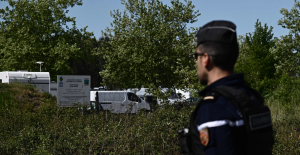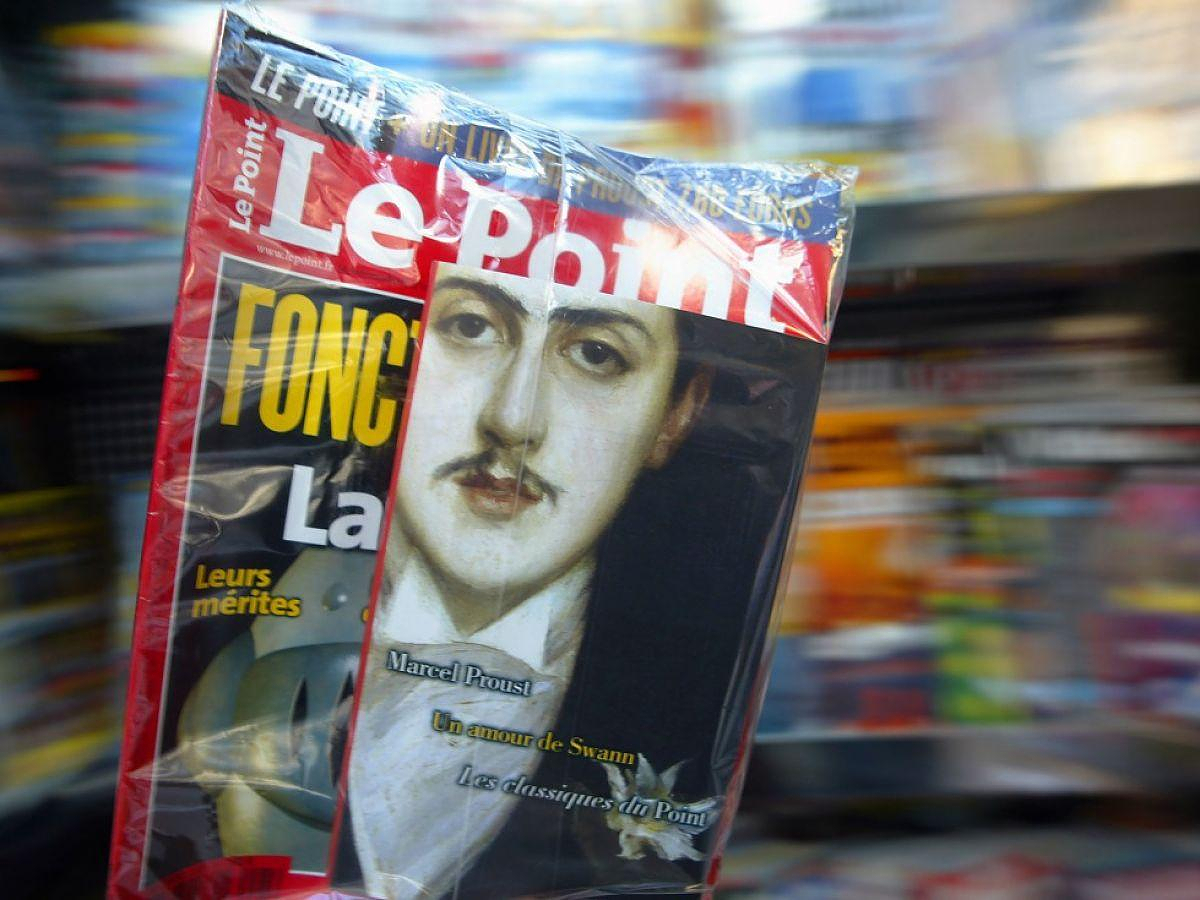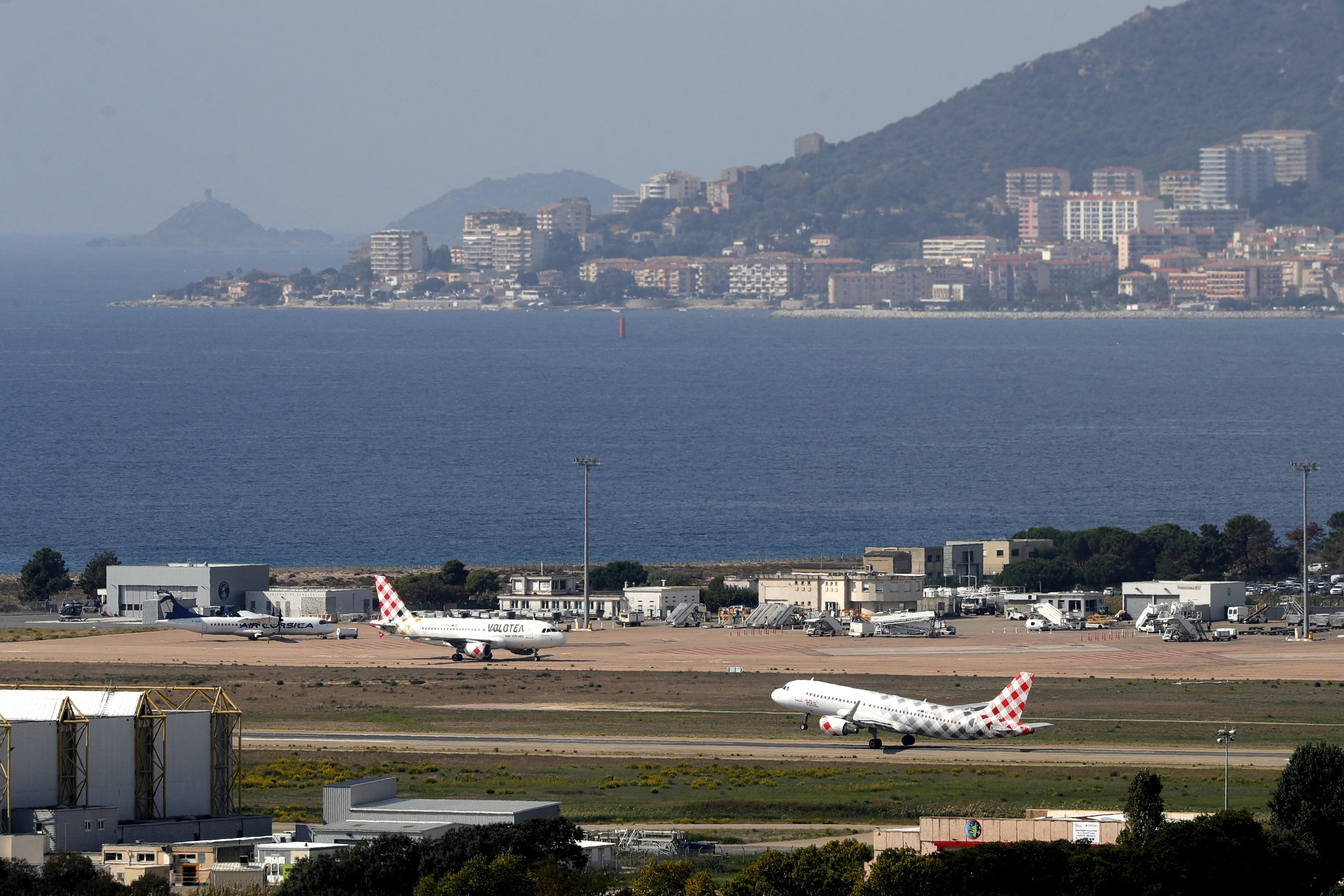In ancient times, Friesland was not necessarily one of the areas where Romans felt comfortable. The Roman historian Tacitus reports in the first century AD that the Frisii are divided into Greater and Lesser Frisians: "Both tribes stretch along the Rhine to the ocean, and also around immense lakes." Limes”, as the imperial border is described, only a few traces of Roman power have survived.
The find that has now been presented in Aurich is therefore all the more important. These are 96 silver coins from the Roman Empire, which archaeologists recovered in Filsum, east of Leer, with the help of hobby detectorists. "This is actually a small sensation, because never before in the last 100 years have so many Roman coins been found here," explained the President of the East Frisian Region, Rico Mecklenburg. The Archaeological Research Institute for East Friesland is part of the municipal regional association for culture, science and education.
Experts date the coins to the 1st and 2nd centuries AD. The most recent issue is a denarius depicting Emperor Septimius Severus (193-211). The pieces are not particularly well preserved, but they can be clearly assigned, it is said.
"Finding Roman coins is perhaps the dream of detectorists in East Friesland or Northern Germany," said hobby detectorist Sebastian Heibült. He is one of a group of five volunteer probers who, working with archaeologists, discovered the treasure in a field in Filsum in spring 2021.
A coin hoard had already been discovered around 1850 on the find area near Filsum. At that time, a shepherd boy is said to have thrown heavy lumps into a body of water out of boredom - until one broke and silver coins came out. These coins disappeared into private ownership and were gradually lost.
"Then coincidence happened," said the head of the research institute, Jan Kegler. During a revision of the archive stock of the city archeology in Stade, coins from the 4th century that are said to have come from East Friesland were rediscovered. Experts from the Archaeological Research Institute investigated the matter together with the detectorists. The find would not have been possible without the help of the volunteers with their metal probes, said Kegler. They had searched an area of seven hectares for months.
At first the searchers only found about a dozen coins. With the help of an excavator, an area of around 2000 square meters was finally removed layer by layer. In the end, the team counted 96 coins and coin fragments.
How the treasure came to Filsum is an open question. According to Tacitus, the "back of the great ocean" was seldom visited by Roman ships. Like their neighbors to the west, the Batavians, the Frisians had won respect with their fighting power in good time. Although they were during the conquests of Drusus from 12 BC. fell into Roman dependency. But "more tired of our greed than even of obedience," says Tacitus, they dared to revolt in AD 28.
A Roman tax collector insisted that the tribute "appropriate to their poverty" should no longer be delivered with the skins of their little cows, but in oversized aurochs proportions. "At first they gave the oxen themselves, then their fields, and finally their wives and children into slavery," writes Tacitus. Several Roman units were put down. Emperor Tiberius' decision to take back the imperial border to the Rhine saved his local commanders from a costly small war.
From then on, "the name of the Frisians was famous among the Germans," which made them sought-after recruits for the Roman auxiliaries. It is quite possible that the Filsum coin treasury belonged to a veteran of such a unit, who wanted to treat himself to a peaceful retirement at home with it. It is also possible that merchants were traveling with the coins, because the Limes was by no means a closed border, but primarily served to control and organize mutual traffic.
The collector's value of the coins is only estimated at several thousand euros. The historical value is greater, said Kegler. "Obviously we have discovered a small piece of the puzzle here that illustrates the transfer of money or material outside the Roman Empire." A total of 124 such ancient finds have been documented throughout Lower Saxony so far, many of which, however, are incomplete. The researchers assume that they have found all of Filsum's coins. The silver treasure will soon be on display in an exhibition.
You can also find "World History" on Facebook. We are happy about a like.

 His body naturally produces alcohol, he is acquitted after a drunk driving conviction
His body naturally produces alcohol, he is acquitted after a drunk driving conviction Who is David Pecker, the first key witness in Donald Trump's trial?
Who is David Pecker, the first key witness in Donald Trump's trial? What does the law on the expulsion of migrants to Rwanda adopted by the British Parliament contain?
What does the law on the expulsion of migrants to Rwanda adopted by the British Parliament contain? The shadow of Chinese espionage hangs over Westminster
The shadow of Chinese espionage hangs over Westminster What High Blood Pressure Does to Your Body (And Why It Should Be Treated)
What High Blood Pressure Does to Your Body (And Why It Should Be Treated) Vaccination in France has progressed in 2023, rejoices Public Health France
Vaccination in France has progressed in 2023, rejoices Public Health France Food additives suspected of promoting cardiovascular diseases
Food additives suspected of promoting cardiovascular diseases “Even morphine doesn’t work”: Léane, 17, victim of the adverse effects of an antibiotic
“Even morphine doesn’t work”: Léane, 17, victim of the adverse effects of an antibiotic Collection of booklet A stalls in March
Collection of booklet A stalls in March Kering expects a 40 to 45% drop in operating profit in the first half
Kering expects a 40 to 45% drop in operating profit in the first half Smartphones, televisions, household appliances… MEPs adopt a “right to repair”
Smartphones, televisions, household appliances… MEPs adopt a “right to repair” Fintechs increasingly focused on business services
Fintechs increasingly focused on business services The standoff between the organizers of Vieilles Charrues and the elected officials of Carhaix threatens the festival
The standoff between the organizers of Vieilles Charrues and the elected officials of Carhaix threatens the festival Strasbourg inaugurates a year of celebrations and debates as World Book Capital
Strasbourg inaugurates a year of celebrations and debates as World Book Capital Kendji Girac is “out of the woods” after his gunshot wound to the chest
Kendji Girac is “out of the woods” after his gunshot wound to the chest The Court of Auditors scrutinizes the management and projects of the Center Pompidou
The Court of Auditors scrutinizes the management and projects of the Center Pompidou Skoda Kodiaq 2024: a 'beast' plug-in hybrid SUV
Skoda Kodiaq 2024: a 'beast' plug-in hybrid SUV Tesla launches a new Model Y with 600 km of autonomy at a "more accessible price"
Tesla launches a new Model Y with 600 km of autonomy at a "more accessible price" The 10 best-selling cars in March 2024 in Spain: sales fall due to Easter
The 10 best-selling cars in March 2024 in Spain: sales fall due to Easter A private jet company buys more than 100 flying cars
A private jet company buys more than 100 flying cars This is how housing prices have changed in Spain in the last decade
This is how housing prices have changed in Spain in the last decade The home mortgage firm drops 10% in January and interest soars to 3.46%
The home mortgage firm drops 10% in January and interest soars to 3.46% The jewel of the Rocío de Nagüeles urbanization: a dream villa in Marbella
The jewel of the Rocío de Nagüeles urbanization: a dream villa in Marbella Rental prices grow by 7.3% in February: where does it go up and where does it go down?
Rental prices grow by 7.3% in February: where does it go up and where does it go down? Europeans: “All those who claim that we don’t need Europe are liars”, criticizes Bayrou
Europeans: “All those who claim that we don’t need Europe are liars”, criticizes Bayrou With the promise of a “real burst of authority”, Gabriel Attal provokes the ire of the opposition
With the promise of a “real burst of authority”, Gabriel Attal provokes the ire of the opposition Europeans: the schedule of debates to follow between now and June 9
Europeans: the schedule of debates to follow between now and June 9 Europeans: “In France, there is a left and there is a right,” assures Bellamy
Europeans: “In France, there is a left and there is a right,” assures Bellamy These French cities that will boycott the World Cup in Qatar
These French cities that will boycott the World Cup in Qatar Football: VAFC supporters are ironic after their descent into National
Football: VAFC supporters are ironic after their descent into National Tennis: Carlos Alcaraz should play in Madrid
Tennis: Carlos Alcaraz should play in Madrid Football: victim of discomfort in the middle of a match in mid-April, Evan Ndicka will resume training with AS Roma
Football: victim of discomfort in the middle of a match in mid-April, Evan Ndicka will resume training with AS Roma Ligue 1: PSG almost champion, OM, shock for the C1… 5 reasons to follow an exciting evening
Ligue 1: PSG almost champion, OM, shock for the C1… 5 reasons to follow an exciting evening


















